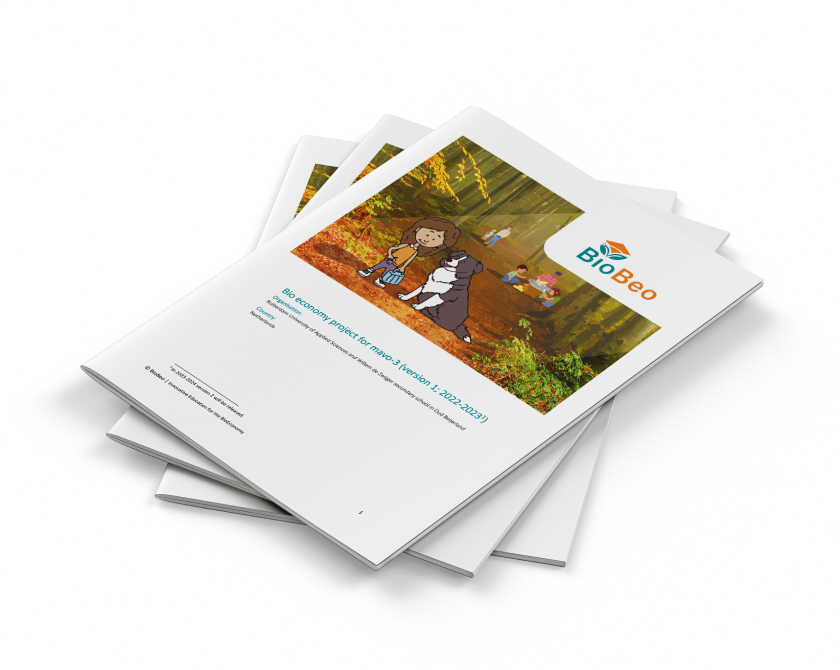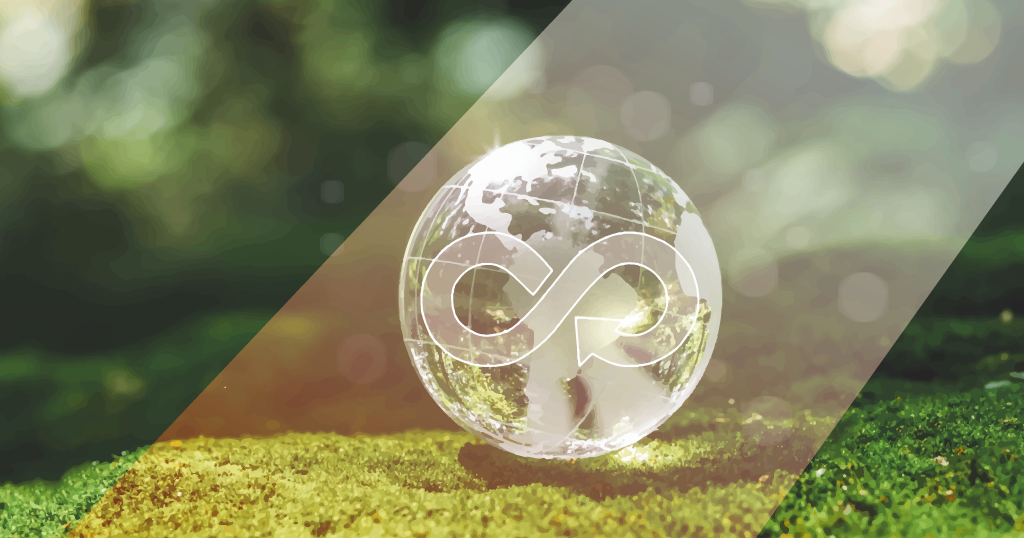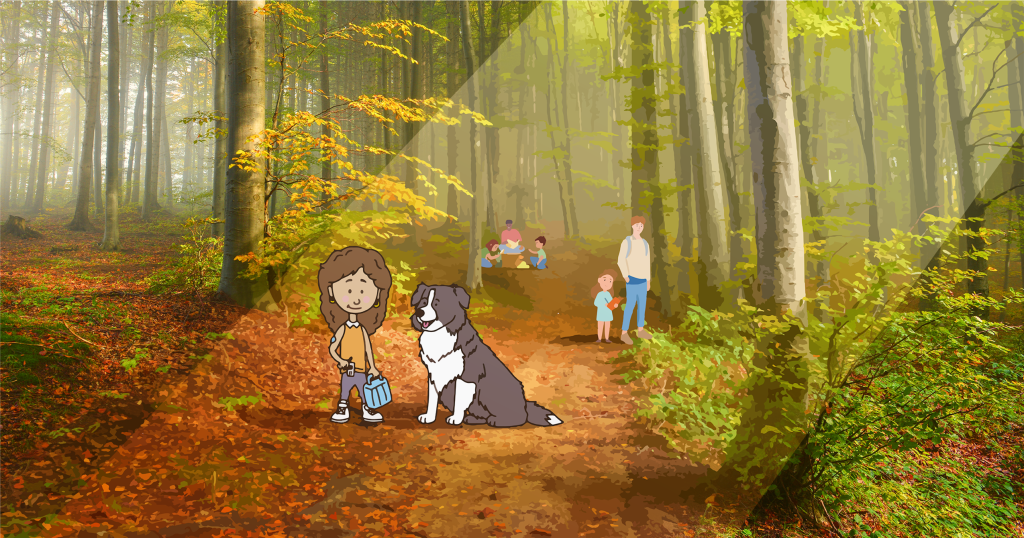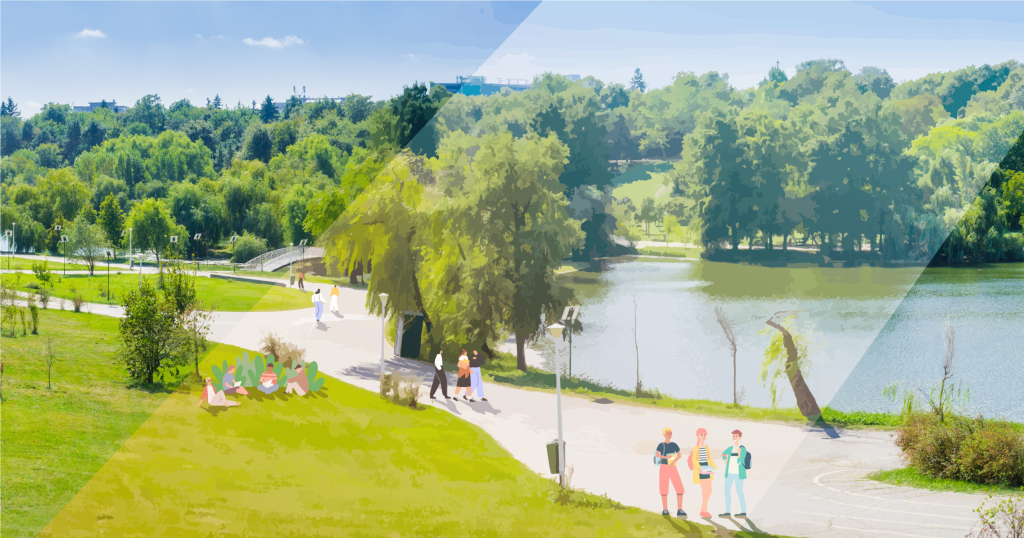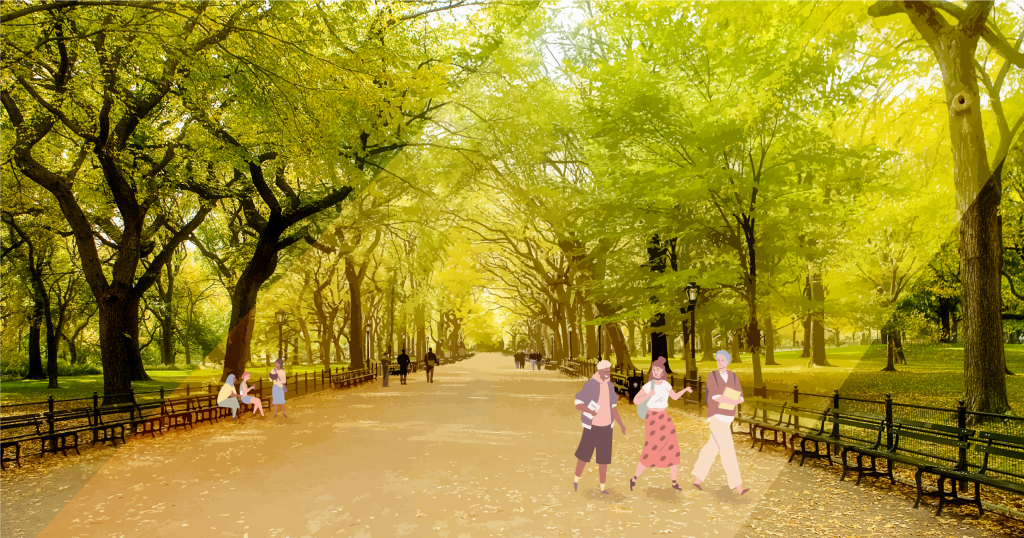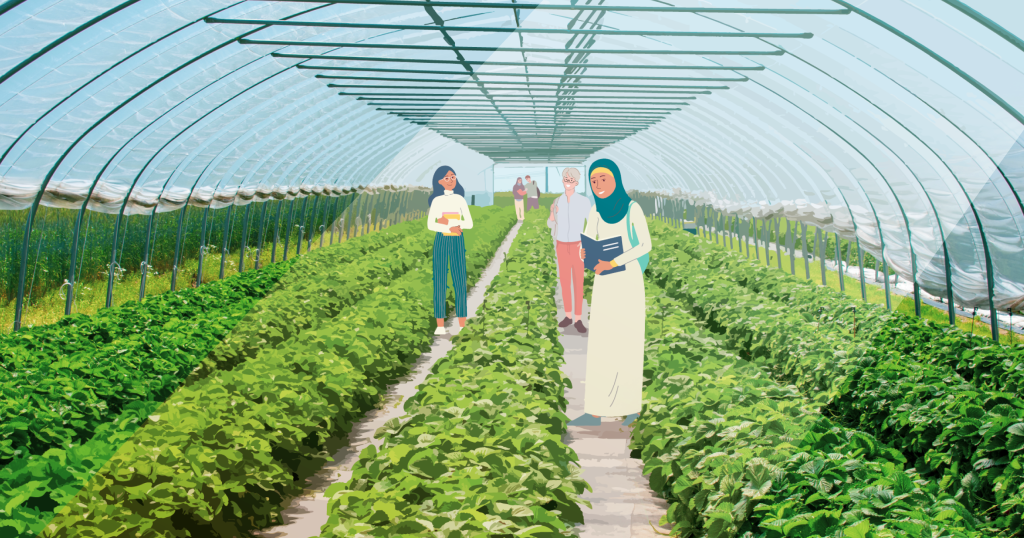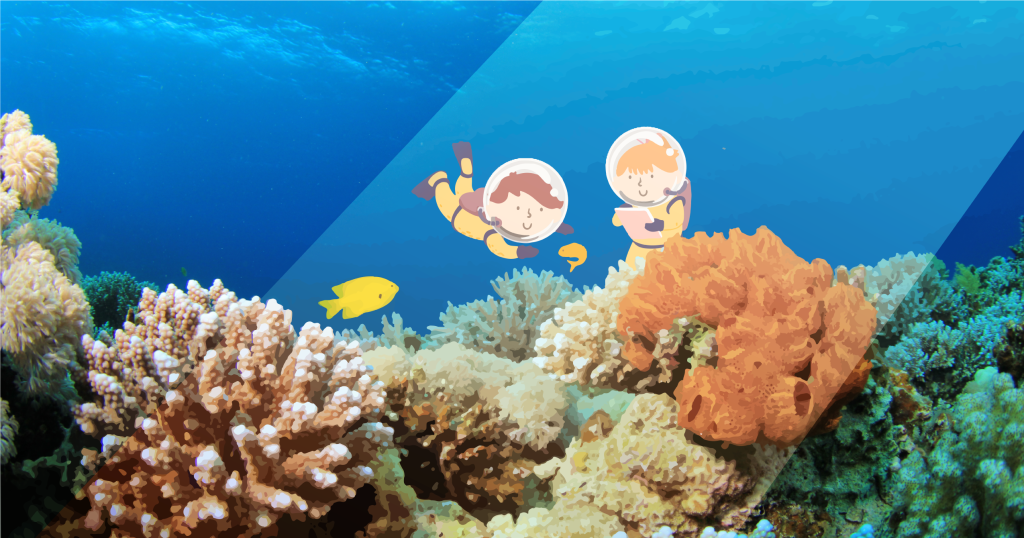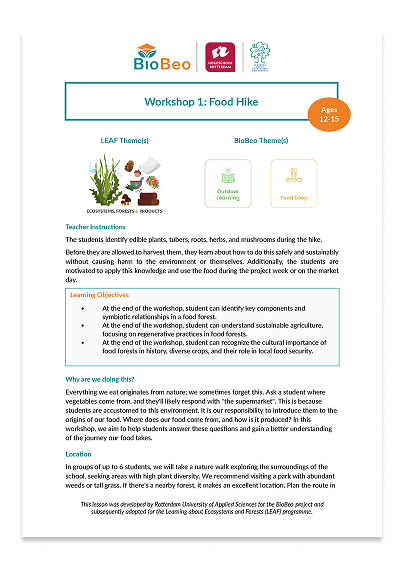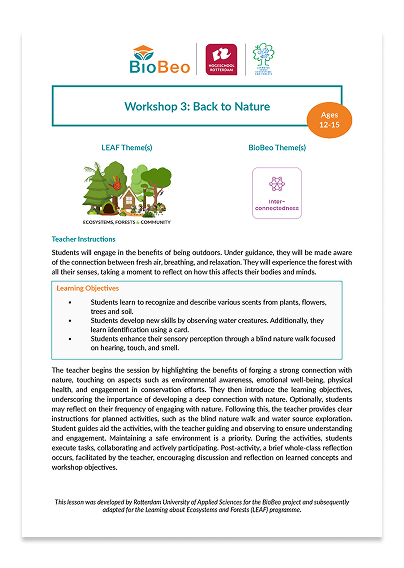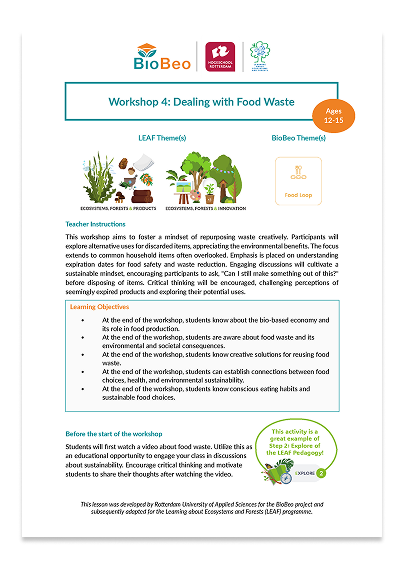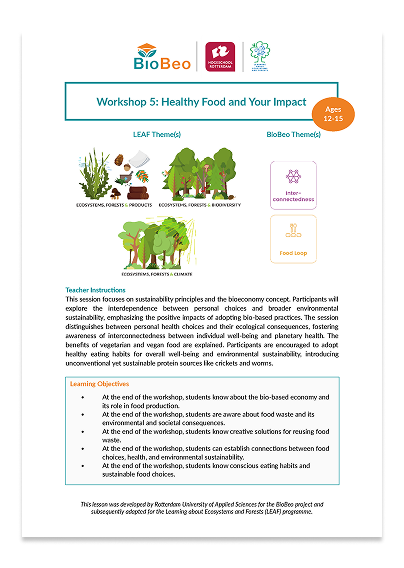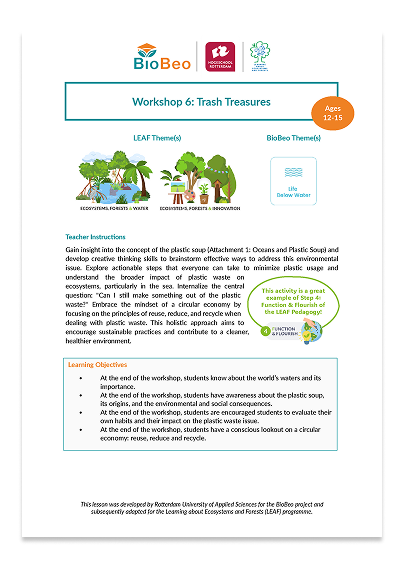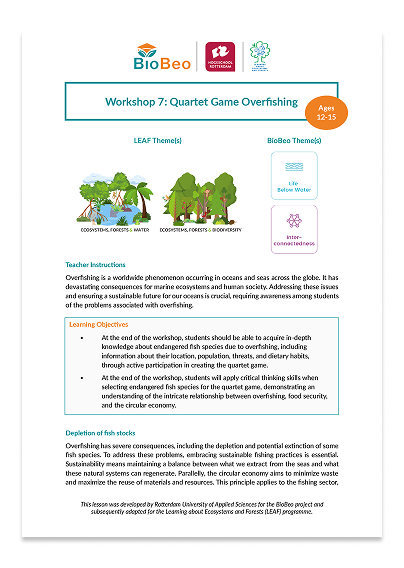
Bioeconomy Teaching Package
The aim of this teaching package is to show students how the transition to a sustainable bioeconomy can best take place and which social actors play a role in this transition. This teaching package contributes to acquiring the key competences in the field of sustainable development and the subject matter is in line with the following Sustainable Development Goals (SDGs): 2, 3, 12, 13, 14, 15. This teaching package is available in English, Dutch and French and can be used for the age group: 12-15 years.
Developed by Odisee University of Applied Sciences.
Teacher’s manual with lesson preparations
In this teacher's manual you will find 6 lesson preparations. In addition, a powerpoint presentation and worksheets are available for students with each lesson. In the lesson packages, 5 themes of the bioeconomy are discussed. These themes can be covered in any order. The themes can also be taught as stand-alone lessons.
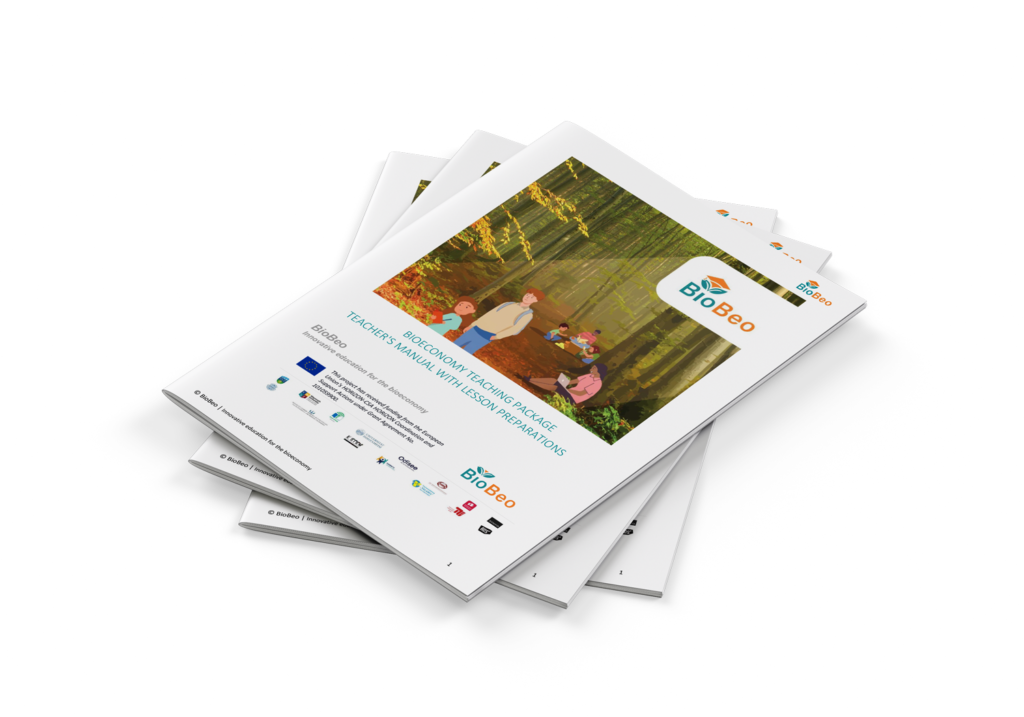
Bioeconomy Workshop Plans
Secondary school students between 12 and 15 years old, will learn about the importance and the overall objective of the bioeconomy by exploring what bioeconomy looks like in their locality and engaging with the surrounding environment, discovering the 5 BioBeo themes.
Methodologies like active learning, guided discovery, talk and discussion, problem solving, collaborative learning, engaging, and interacting with the natural environment, free exploration of materials, direct teaching, and artistic expressions are applied in this package.
Developed by the Rotterdam University of Applied Sciences (RUAS) in the Netherlands and adapted by the Foundation of Environmental Education
Exploring the Ocean Currents in Circular Bioeconomy
3 Lesson Plans to explore the topic of the Ocean currents, which are increasingly affected by human activity, including acidification, plastic waste, over-fishing, and oil/gas extraction.
Developed by E3STEM.
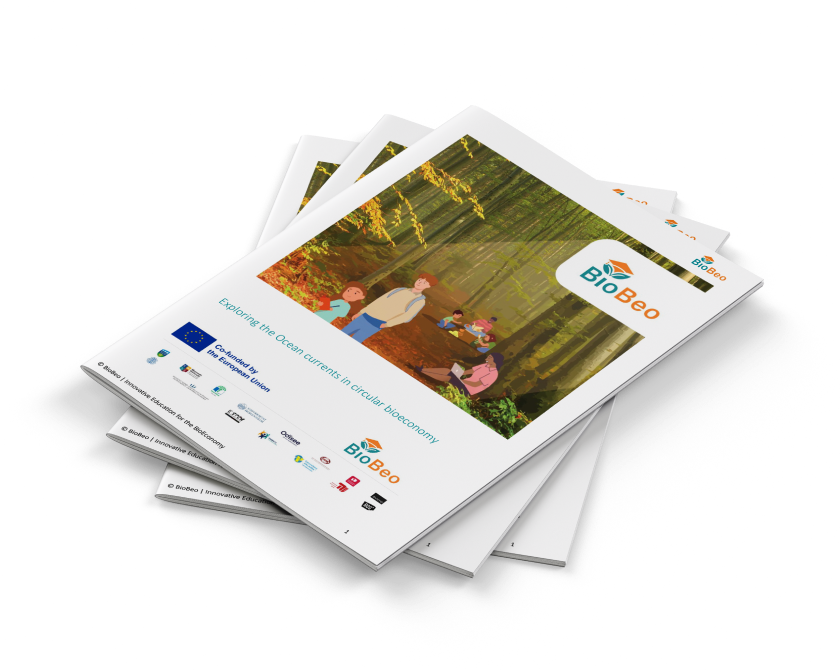
From Satellite to Soil - Sustainable Agriculture
6 Lesson Plans on the topic of soils, forestry and biological raw materials. Good soil and forest health is an essential aspect of the circular bioeconomy, Biodegradable and compostable plastics are addressed as well as an overview of products from biological raw materials are presented.
Developed by E3STEM.
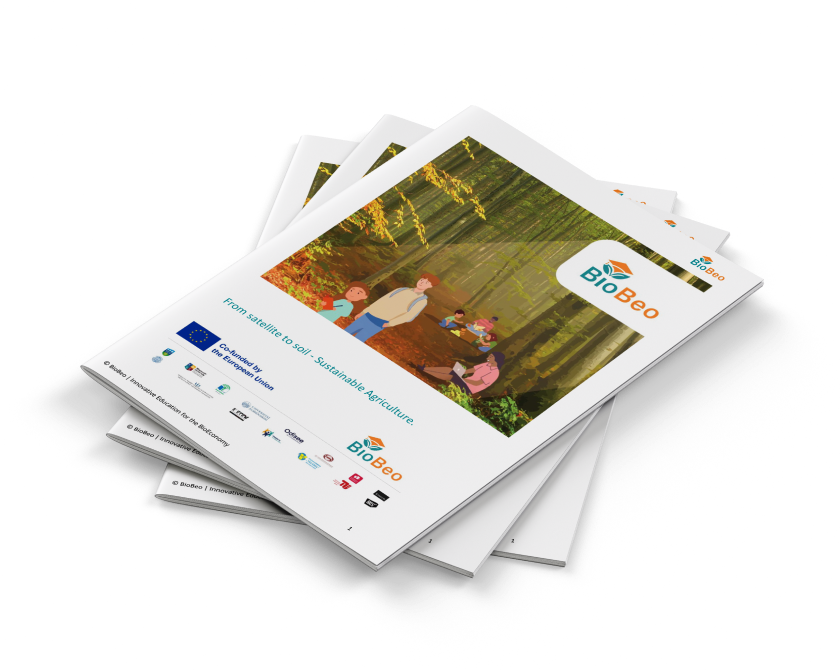
BlueCity
Students of this age group are not so familiar with sustainability. To bring the theme closer, they will first be introduced in the need for a sustainable economy. To see what the bioeconomy looks like in practice, this plan includes an excursion to Blue City, an innovative business center in Rotterdam, where start-ups work on creative solutions with bio resources.
Developed by Rotterdam University of Applied Sciences.
